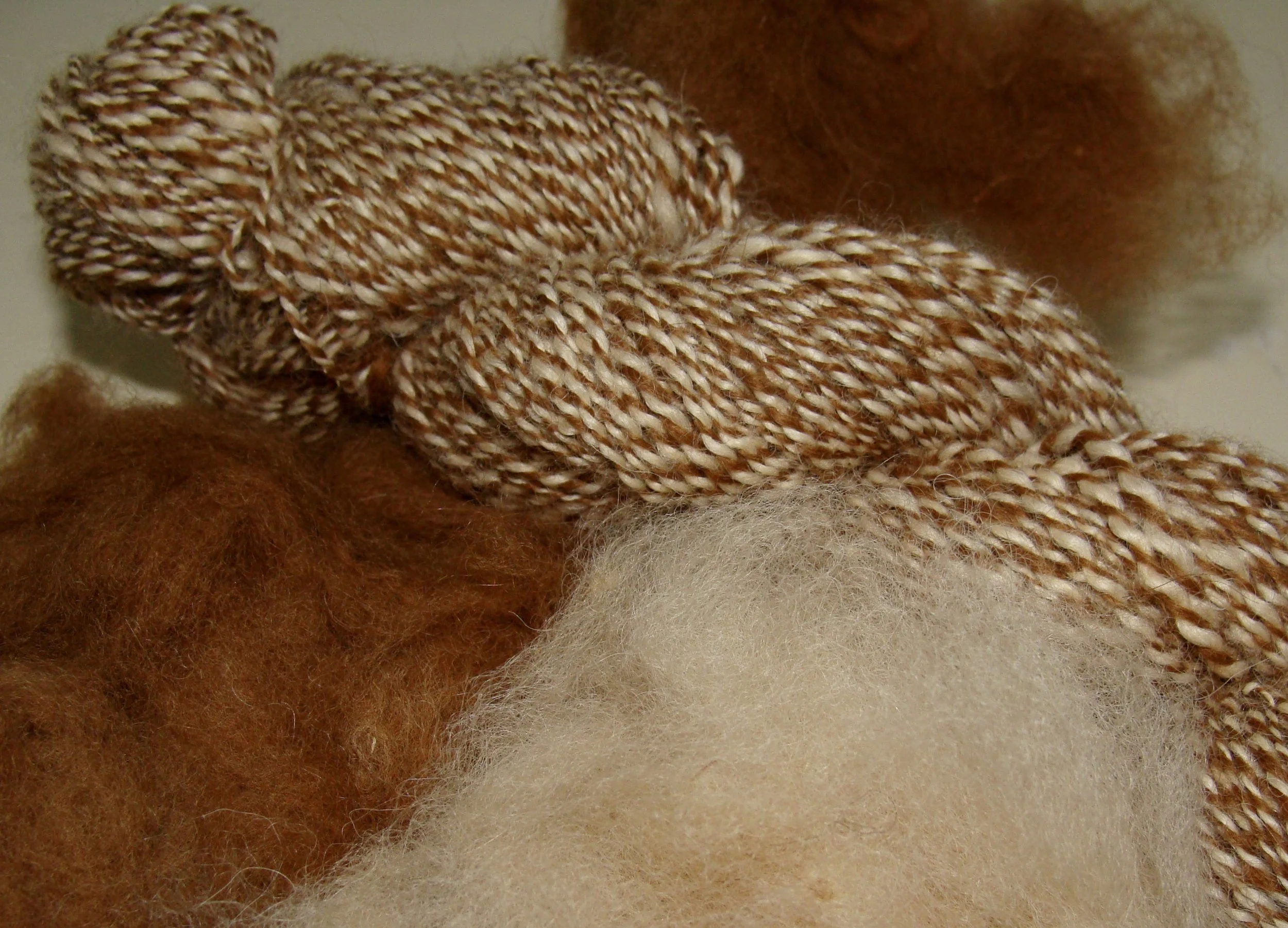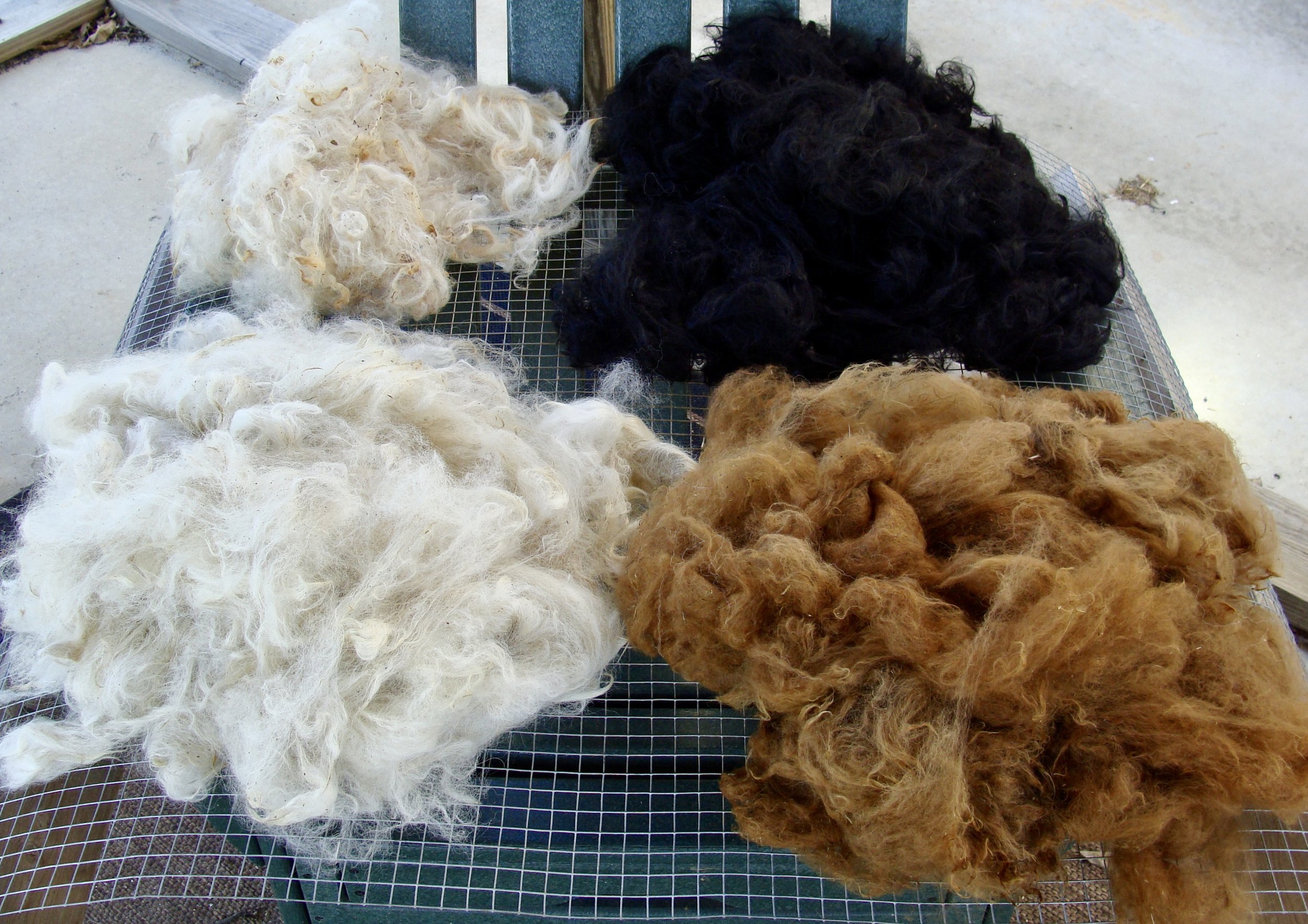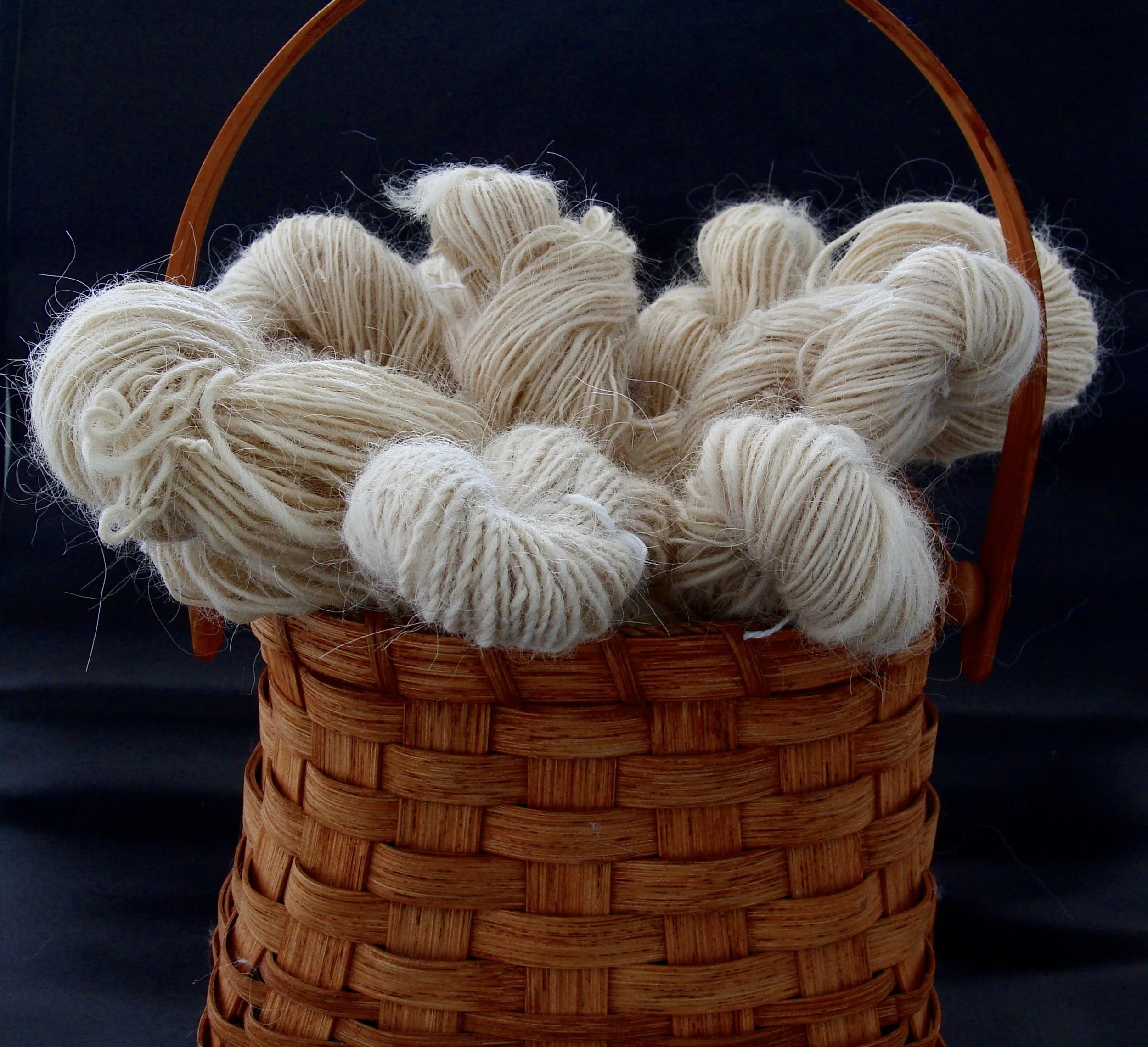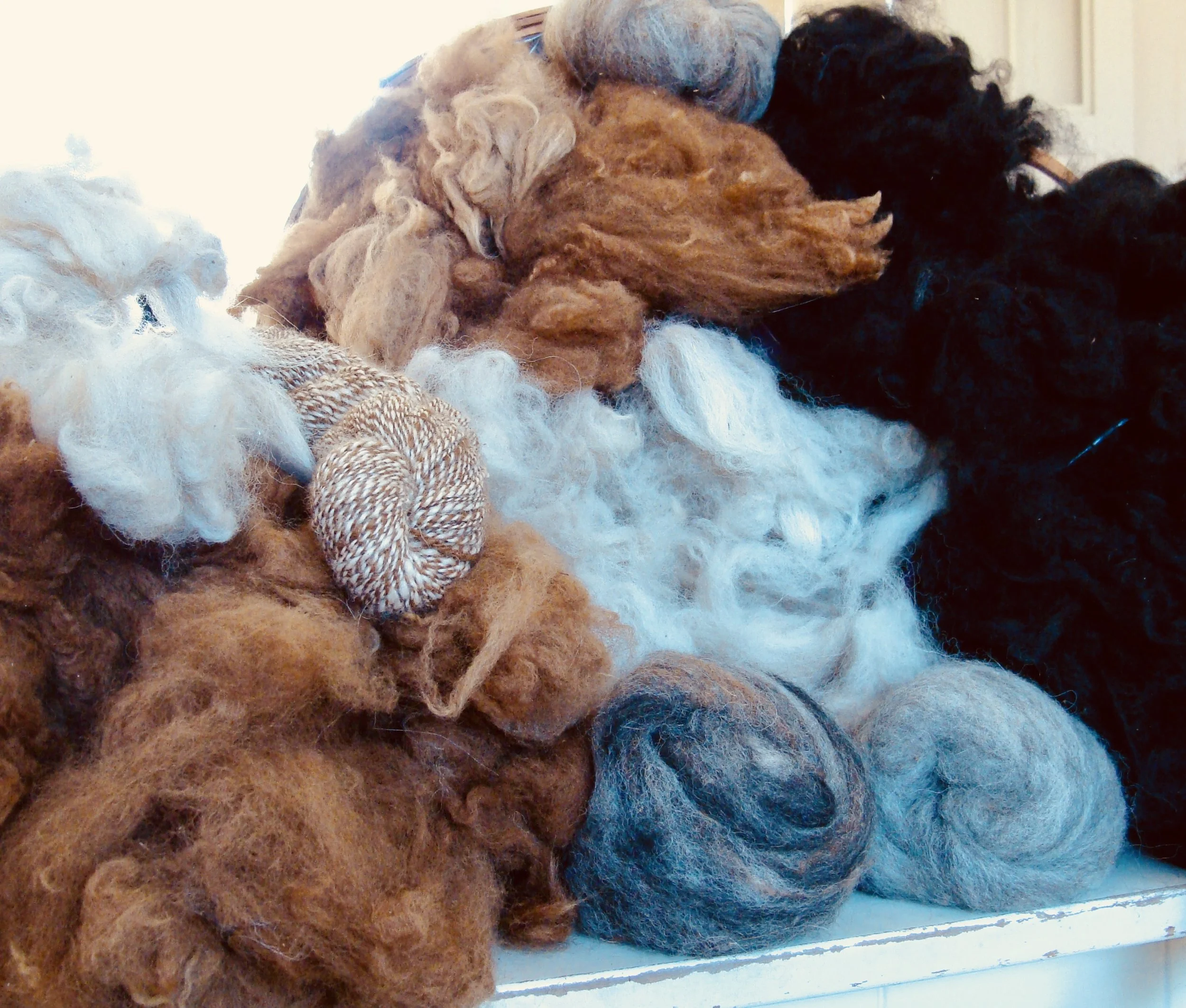Let's Spin . . . Alpaca
The other 'Let's Spin . . ." posts have all been about various sheep breeds: Romney, Coopworth, Jacob, Lincoln, and Blue Faced Leicester. But today's post introduces something a little different, Camelids, which obviously includes camels, but also humpless South American alpacas, llamas, guanacos, and vicuñas.
The fiber produced by camelids is technically hair, although the softer fibers are often referred to as wool. Most of the camelid spinning fiber or yarn on the market is from alpacas and llamas, whereas vicuña and guanaco fibers are scarcer. Baby camelids have the softest and most desirable fiber and, as would be expected, their fiber costs more.
Trivia Question
A baby camel is called a ______.
A baby alpaca, llama, or vicuña is called a ______.
A baby guanaco is called a ______.
**see end of post for answers**
Photo - Alpaca Fiber Designs
Vicuñas, guanacos, and camels are found in the wild, while alpacas and llamas have been domesticated for several thousand years. The Incas of Peru raised both llamas and alpacas for fiber. Alpacas are smaller than llamas, and whereas llamas are primarily used as beasts of burden in their native lands, alpacas are mainly raised for their fiber.
There are two varieties of alpaca, the huacaya (pronounced wuh-kai-ya) is the wooly type pictured above and the suri which has silky, long locks. About 90+% of alpacas are huacaya. Both types of fiber are soft, and typically do not have guard hair (coarse, water-repellant outer fibers that cover and protect the downy undercoat of some fiber animals).
Alpaca is said to be three times warmer than wool. It is also a good alternative fiber for people who are allergic to wool.
I've read there are 22 natural shades of alpaca which include white, cream, a range of browns from very light to dark, reddish browns, black, and a range of grays from silvery to charcoal. In addition to its many natural colors, alpaca takes wool dyes wonderfully.
My four alpaca fleeces pictured above are all huacaya.
As well as its multitude of natural colors, alpaca is known for its smooth feel, lovely drape, and fiber strength. Elasticity is not an alpaca characteristic meaning that it will not bounce back into shape; so a 100% alpaca sweater or socks would not be a great choice. However, alpaca is often blended with wool to increase the elasticity of the spun yarn and finished product. It also blends beautifully with mohair, silk, or angora rabbit.
I chose to spin a pure alpaca top. You can read about how I prepared the alpaca fleece in this post.
Huacaya alpaca has a staple length of 2-6 inches and a fiber diameter generally finer than sheep's wool; averaging in the mid-20s in micron count.
I read that alpaca is slipperier than wool and would need a bit more twist than comparable wool yarn. I didn't particularly notice this to be the case with my spin.
The brown alpaca top still had a little vegetative matter that I needed to pick out now and then, but all in all it was a delightfully smooth and easy spin.
Technical Alert
Singles spun Z-twist, worsted technique, 10.5:1 ratio, removed tension band from my Louet-S17 wheel.
2 Ply spun S-twist, 10.5:1 ratio.
16 wraps/inch (WPI)
I chose to ply singles of creamy white and cinnamon brown to create a tweedy effect in my yarn.
Alpaca yarn will bloom with washing. So to finish the yarn, I soaked it in hot water for about 30 minutes and then wrung, whacked and snapped it and finally hung it until dry. (this sounds a bit brutal as I'm proofreading, but this is what it's called :-)
213 yards/2.1 ounces/lace weight. My finished yarn is super soft and silky with a beautiful drape. It has a bit of luster and a fuzzy halo. I'm thinking this will make a pair of toasty warm and lusciously soft mittens. Now, I just need to learn to knit . . . . .
Trivia Question Answers
A baby camel is called a CALF.
A baby alpaca, llama, or vicuña is called a CRIA.
A baby guanaco is called a CHULENGO.
You never know, it might just be a Jeopardy question some evening!
References
- The Fleece & Fiber Sourcebook by Deborah Robson & Carol Ekarius
- Spinning Daily Presents A Guide to Spinning Alpaca















